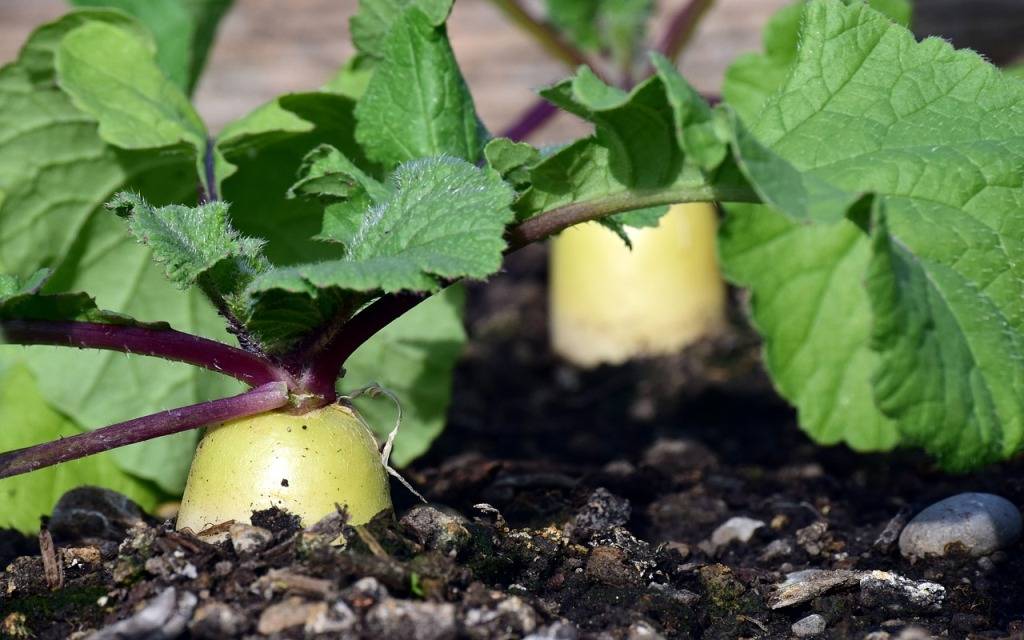
Radishes can be one of the easiest and fastest vegetables to grow, but just because they grow fast does not mean they are fuss-free. Plus, they can also be a little over-particular about their growing conditions. Here are some truths about growing radishes, and what you can do about them.
Radishes need ideal growing conditions
Radishes sprout relatively quick, and subsequent growth is fast if growing conditions are ideal. But if things go wrong one might notice holes in the leaves, the leaves might wither or turn yellow before the edible root has even started to grow beneath the soil, or the seeds might not even germinate. Holes in the leaves or roots may be caused by pests that consume both parts of the plant, while yellowed leaves may be a sign of inadequate moisture during the root enlargement period. Failure to germinate happens when the seed has not been planted in the right weather conditions. Always plan radish planting within one week before and one week after the right conditions set in.
Radishes need space
The fast growth of radishes comes with conditions, including an uncompromising need for space. Seedlings that are planted too close together fail to swell up, and as they grow they rob each other of nutrients necessary to their development. For optimal growth, seeds need to be sown at uniform spacing and regular thinning should be carried out once they start spreading. Small salad radishes mature nicely when thinned to 2 inches (5cm) apart, but allow 4 inches (10cm) between big radishes.
Read More: 10 Reasons to Eat Radishes (Mooli) This Winter; How to Make Radish Juice
Radishes need planning
Radishes have no tolerance for weeds or moisture stress, and they must have soil that never dries out. Early-season seedlings invite problems with slugs in rainy climate, so attentive watering is the only solution when it comes to growing radishes. In addition, keep in mind that the plants do not tolerate heat well, as they grow best in cool and damp weather.

Radishes need pest & disease protection
Radishes are not without their problems. Flea beetles make tiny holes in the leaves, slugs and snails chew grooves in perfect roots, and a sudden deluge can cause radishes to split and start rotting. These are a few of the reasons to promptly harvest radishes that have popped up out of the ground.
Radishes need prompt harvesting
Despite claims that some radish varieties will hold in the soil without becoming pithy, the truth is that radishes that are left unharvested, even a day or two, might spoil.
The Solution- Give Your Radish the Best Possible Start-to-Finish
Give your radishes the best possible start to ensure a good crop. Start off with rich, loose, well-drained soil, and don't add any additional fertilizing as they do not require it. Select land that receives at least six hours of direct sunlight a day, and prepare the soil bed by removing all weeds, rocks and twigs. Put plenty of compost or manure, and rake the area smooth. Create furrows roughly an inch wide and 1/2 inch deep and lay individual radish seeds in them about 1/2 to 1 inch apart. Cover them lightly with soil, and water the bed until the soil is moist but not muddy. Keep in mind that the bed needs to be moist always as radishes require plenty of moisture for root development.
To maintain healthy crop leave 2 to 3 inches of space between each plant as this gives them room to grow to their full size. Cultivate between the rows often to keep weeds out, and re-adjust some of the soil up around the base of the plants. Continue to water as often as needed to keep the plants well-supplied and moist. Pick a sample radish to check for pests, and apply insecticide as required.















